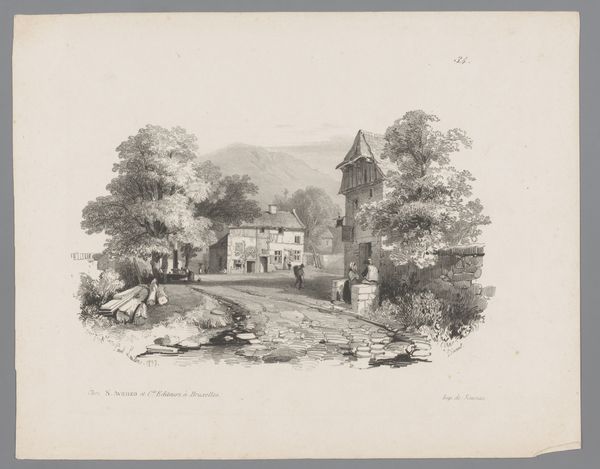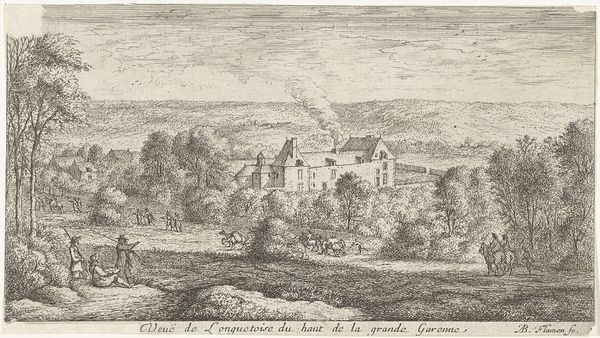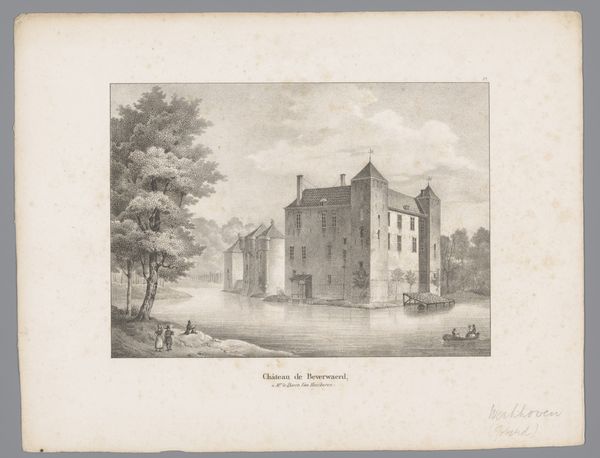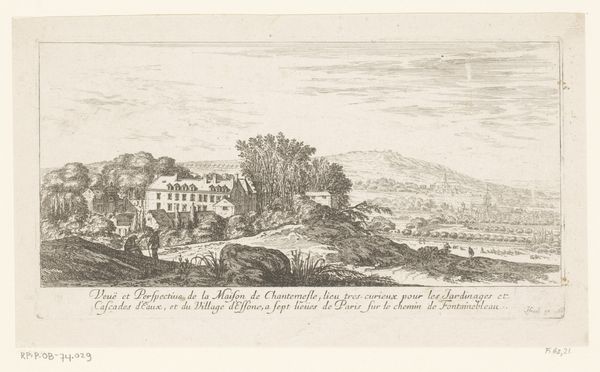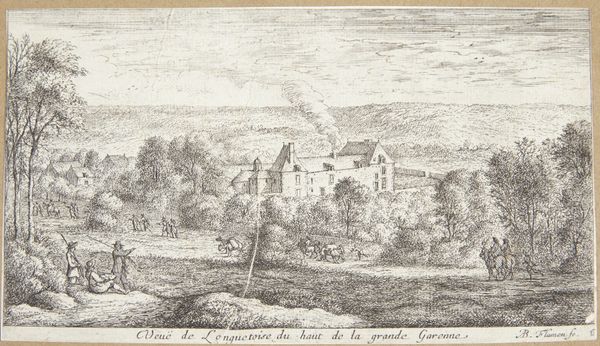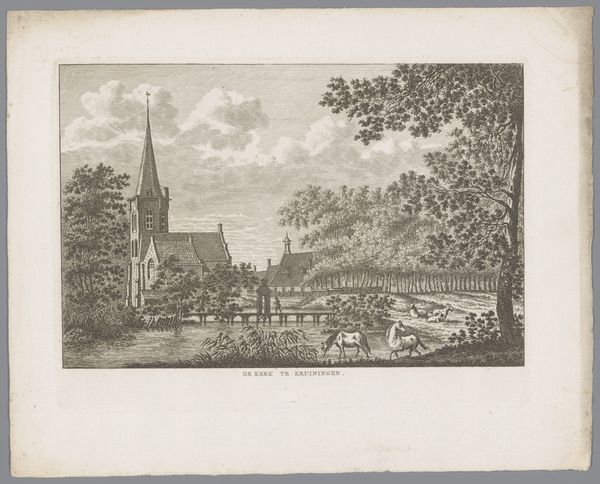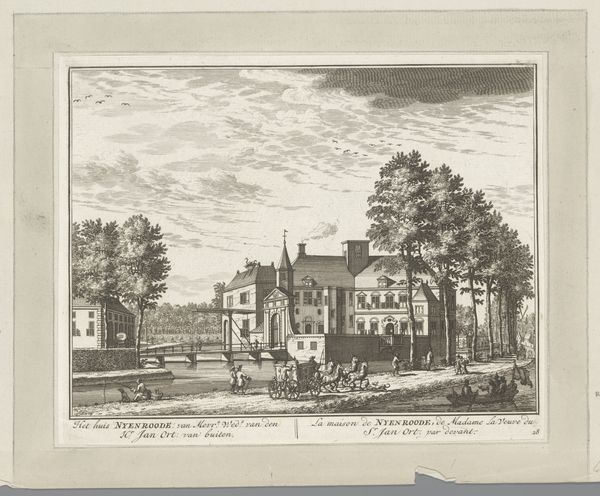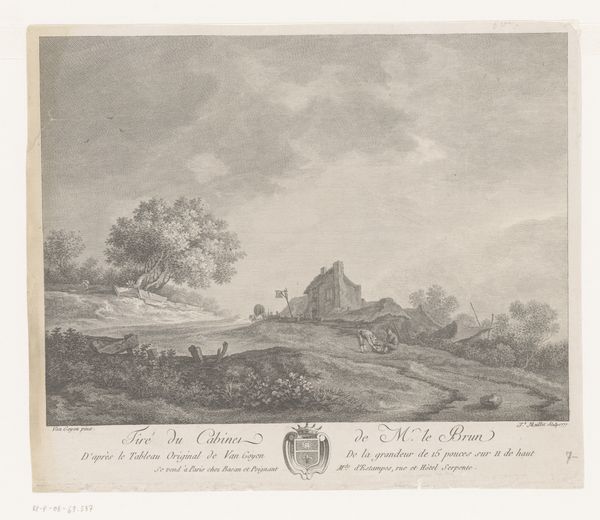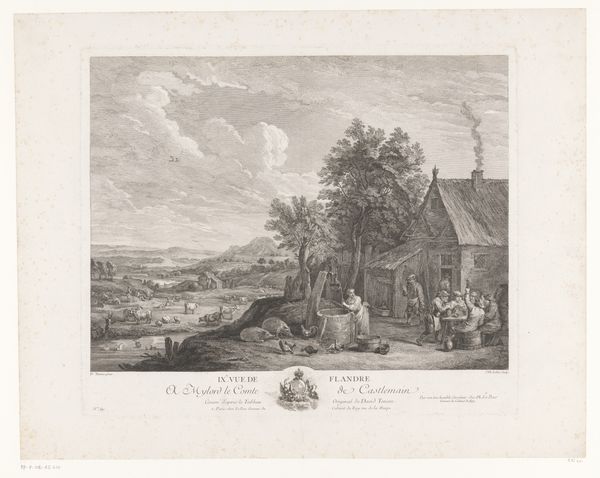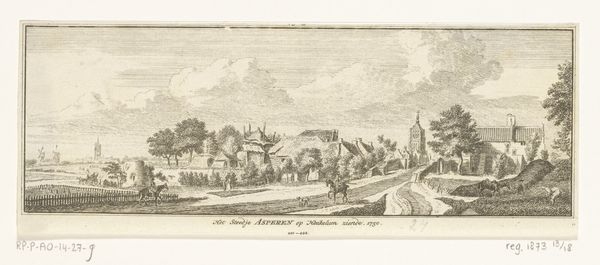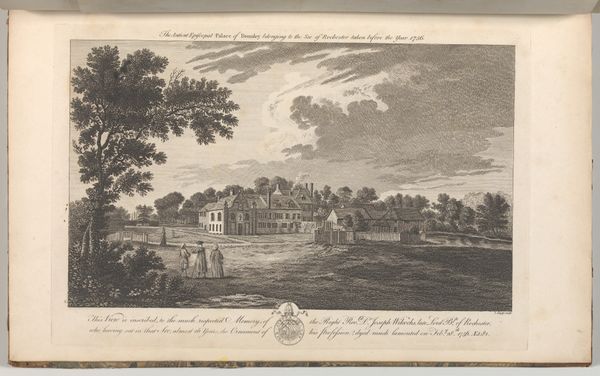
Dimensions: height 255 mm, width 336 mm
Copyright: Rijks Museum: Open Domain
Curator: Here we have Michel Picquenot’s "Abdij van Paraclet," a print created sometime between 1757 and 1814, rendered in precise lines. It gives us a glimpse into the abbey’s architecture nestled within a cultivated landscape. What strikes you upon first viewing? Editor: The quietude of the scene, most definitely. Despite the figures, animals, and implied transit with the cart and wagon, an almost melancholic serenity permeates everything. I think the composition funnels the viewer's focus towards the abbey itself, emphasizing its historical and religious importance, perhaps even as a refuge. Curator: I find that compelling. Consider, then, how such imagery solidified and disseminated cultural ideals about religious life during the Baroque period, imprinting the iconography of serenity, retreat, and divine devotion within collective memory. Editor: Precisely, but within such serene imagery we need to consider power dynamics, particularly gender and class. Abbeys, especially in their historical context, represented both opportunity and oppression for women. Furthermore, landscape as a genre often masked the labor required to produce such idealized scenes; here we have shepherds, carts and cultivated grounds--whose toil went unseen in these 'peaceful' scenes? Curator: Indeed, it’s difficult to divorce such scenes from their socio-political underpinnings. The print, with its intricate lines, offers both an idealized image of a religious sanctuary and a subtle suggestion of societal stratification. The figures look like staff; the building looms tall on the horizon, but is its splendor at the expense of others? Editor: Absolutely, this image functions, I feel, as propaganda just as much as it is art, one perpetuating the historical narrative through idealized visuals. What might such a view conceal about class or gender inequalities, if anything? That’s the pertinent question in our contemporary analysis. Curator: Food for thought indeed. I initially considered only its representational value within its historical milieu. You've shown how a single image, particularly one that survives over centuries, embodies multi-layered meanings—narratives intertwined and at times even contradictory. Editor: Precisely; recognizing those complexities breathes new vitality into the piece, encouraging a continuous conversation with the art and its many afterlives.
Comments
No comments
Be the first to comment and join the conversation on the ultimate creative platform.
